calsfoundation@cals.org
Cushman (Independence County)
| Latitude and Longitude: | 35°52’22″N 091°45’15″W |
| Elevation: | 715 feet |
| Area: | 4.08 square miles (2020 Census) |
| Population: | 433 (2020 Census) |
| Incorporation Date: | March 12, 1906 |
Historical Population as per the U.S. Census:
|
1810 |
1820 |
1830 |
1840 |
1850 |
1860 |
1870 |
1880 |
1890 |
1900 |
|
– |
– |
– |
– |
– |
– |
– |
– |
– |
– |
|
1910 |
1920 |
1930 |
1940 |
1950 |
1960 |
1970 |
1980 |
1990 |
2000 |
|
224 |
349 |
412 |
427 |
314 |
241 |
427 |
556 |
428 |
461 |
|
2010 |
2020 |
|
|
|
|
|
|
|
|
|
452 |
433 |
|
|
|
|
|
|
|
|
Cushman, established in 1886 as the result of an accident, was an important shipping and trade center for the next seventy-two years. The center of the tremendously valuable manganese mining industry, Cushman also served as a shipping point for businesses and farmers in northern Independence County and most of Izard County.
William Einstein of St. Louis established a mining operation on what is now known as Polk Southard Mine, near what is now Sandtown Road, in about 1866. At the time, this was just a wild wooded area. In 1885, the Keystone Mining Company, an Andrew Carnegie company, began operations on Southard Hill. Shortly thereafter, the St. Louis Mining Company came to the area and began operations near Polk Southard. This marked the beginning of significant mining in the area.
The Batesville Manganese District is an east-west belt about two miles north of Batesville (Independence County). The belt is twenty-four miles long and four to eight miles wide, with Cushman near the geographic center and closest to the richest deposits. Originally, the mines were shafts and tunnels with some surface prospects, though in the 1950s, earthmoving equipment converted the operations to strip mining. Manganese has long been an important alloy agent in the manufacture of steel.
A small village grew around the mining activity and shortly became known as Minersville. A rather large quantity of ore was being shipped from the area, hauled by wagon and ox cart to Batesville or to Penter’s Bluff (Izard County) on White River for shipment by packet ship to world markets. Owners of the St. Louis, Iron Mountain and Southern Railroad were very much aware of the importance of this mining industry. The Iron Mountain Railroad, as the company was generally known, built a rail line from St. Louis to Little Rock (Pulaski County) by way of Newport (Jackson County). Shortly thereafter (about 1873), they began construction of a branch line to the mining fields. Their objective was the rich mining area near the tiny village of Minersville in northern Independence County. About one and one half miles from their destination, while blasting through very difficult terrain, a worker was accidentally killed. The contractor was sued, and construction halted. The railroad company decided to terminate the rail line at that point and build shipping facilities at end of track.
J. M. C. Southard, a local civic leader, surveyed and laid out lots, blocks, and streets in the town he called Minersville, near the new rail terminus, on December 9, 1886. Henry and Elizabeth Newman, who owned the land, dedicated these streets on May 17, 1888. The terminus, about a half mile from the village, was named Cushman in honor of a railroad vice president and operating officer. Minersville changed its name to Cushman when it was incorporated in 1906.
The first passenger train arrived on December 29, 1886. The train made daily runs from Cushman to Newport and returned to Cushman for the night, where a turntable had been built in 1886 to turn the engine around. The train crew was required to spend the night at the terminus. A depot and other buildings were built in what is known as the turntable hollow.
A post office was established on July 7, 1887, with William Riggs as postmaster. In 1889, Cushman had a population of sixty, with fourteen businesses. Ninety-six mining employees and a number of farmer/contractors contracted their wagons and teams to freight the ore from the mines to the rail terminal. In 1899, records show Cushman with a population of 200. At this time, Cushman had three doctors and two hotels. The town was officially incorporated on March 12, 1906.
Cushman’s estimated population during the World War I years was in excess of 2,000, with many more in the area adjacent to Cushman. The shortage of labor for the mines was of national concern. The shortage was so serious that Italy, an American ally during the war, sent 900 soldiers to Cushman to mine ore. Manganese is essential to the manufacture of strong steel, especially the kind of steel needed in the production of war machinery such as tanks.
With the end of World War I, the demand for manganese dropped greatly. The economy of the area became based on farming and timber. Cattle pens were built alongside the railroad, and a lumber yard was established. During the next twenty or so years, hundreds of carloads of fruit, cattle, sheep, and lumber were shipped from Cushman. Cushman was once famous for its peaches. A cotton gin produced baled cotton to be shipped. Manganese was still being mined but only in small amounts.
In addition to freight moving out of the terminus, Cushman was an important incoming freight terminal for northern Independence County and southern and eastern Izard County. Freight was shipped to Cushman to be off-loaded and hauled by wagon to such places as Mount Pleasant, Lunnenburg, Melbourne, Franklin, Violet Hill, LaCrosse and many other communities in Izard County.
Freight was not the only commodity brought to Cushman by the railroad. Many “drummers” (traveling salesmen) came to Cushman on the Cushman Local, the regular Iron Mountain train serving Cushman and points on the rail to Newport and back. After spending the night at one of the hotels, they rented buggies at the local livery stable and left for points north on their route, returning to Cushman on the way back to their home base.
The Depression years saw mining decrease to very low levels, with farming and timber remaining the major activities. World War II brought back manganese mining and boomtown activity to Cushman, but at the end of World War II, mining again decreased considerably.
Filmmaker Montgomery Pittman set his 1956 movie Come Next Spring in a fictional version of Cushman. He also claimed to have lived there, though his name does not appear on any census reports for the area.
In 1952, the U.S. government established a strategic program to stockpile manganese, which was considered a strategic and critical material. The program was to terminate on January 1, 1961, or when 28 million long ton units of manganese had been purchased. In 1956, more than $2 million worth of ore was shipped from the Batesville Manganese District. In 1958, Cushman shipped 286 carloads of ore valued at more than $1 million. On August 5, 1959, the government purchased the last ton of ore, as prescribed by the program. Domestic production of manganese ore came to an end, and the mines in Cushman closed. Brazil, Gold Coast Africa, and others were putting manganese ore on American docks for less than the freight cost of domestic mines.
Cushman has made the transition from a booming mining town to a quiet bedroom community, with many residents working in Batesville. The Cushman schools were consolidated with Melbourne’s for the 2007–2008 school year, and then with Batesville schools in 2008–2009, being closed completely in 2010. The town has a community water system and local law enforcement. A school and community homecoming and Miner’s Day celebration are held each year on the last Saturday in June.
For additional information:
Hewett, D. F. “Manganese Output in Arkansas District Affected by Labor Shortage.” Engineering and Mining Journal 104 (November 24, 1917).
Shiras, Tom. “Manganese Mining in Arkansas.” Engineering and Mining Journal 105 (December 22, 1917).
Sims, C. C. “The Story of Cushman.” Independence County Chronicle 2 (April 1961): 8–13.
Smith, Jim, and Becky Wood. Cushman, Arkansas: The Boom Town That Wouldn’t Die. N.p.: 1994.
———. The Cushman Manganese Mines and the Batesville Manganese District Arkansas. N.p.: 1995.
Spier, William. “A Social History of Manganese Mining in the Batesville District of Independence County.” Arkansas Historical Quarterly 36 (Summer 1977): 130–157.
Widner, Amy. “Cushman School Can Go out with Pride.” Arkansas Democrat-Gazette, February 15, 2009, pp. 1S, 4S.
James Smith
Batesville, Arkansas
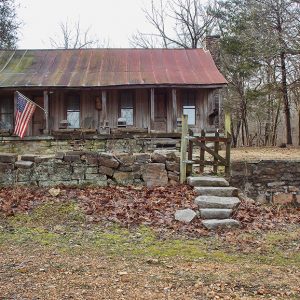 Bustin Home
Bustin Home 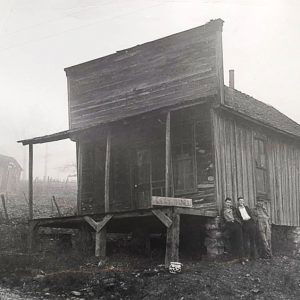 Cushman City Hall
Cushman City Hall 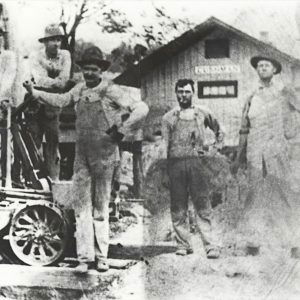 Cushman Depot
Cushman Depot 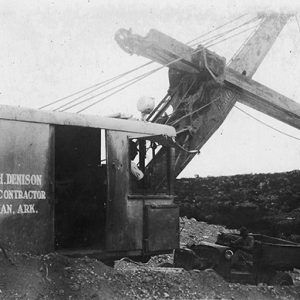 W. H. Denison; Contractor
W. H. Denison; Contractor 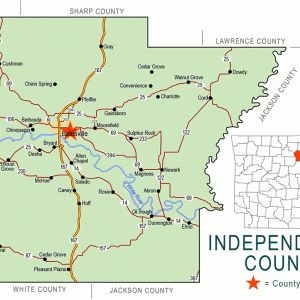 Independence County Map
Independence County Map 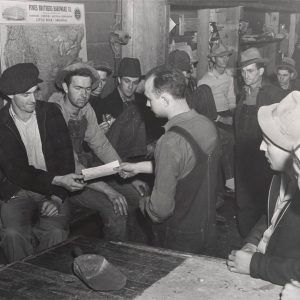 Manganese Miners
Manganese Miners 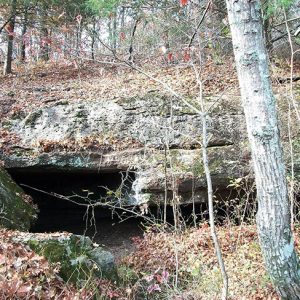 Saltpeter Cave
Saltpeter Cave 



I’m wondering what time period Cushman, Arkansas, was known as Mudtown.
Leonard Baxter, a lifetime resident and a longtime mine owner, told me before he died that Mr. Denison had written evidence that manganese mining was active in the Southern Hill area at Cushman before the Civil War. Note: Herbert Hoover as a young U.S. government employee with the Geologic Survey Team visited Cushman to observe the manganese fields and mining operation.